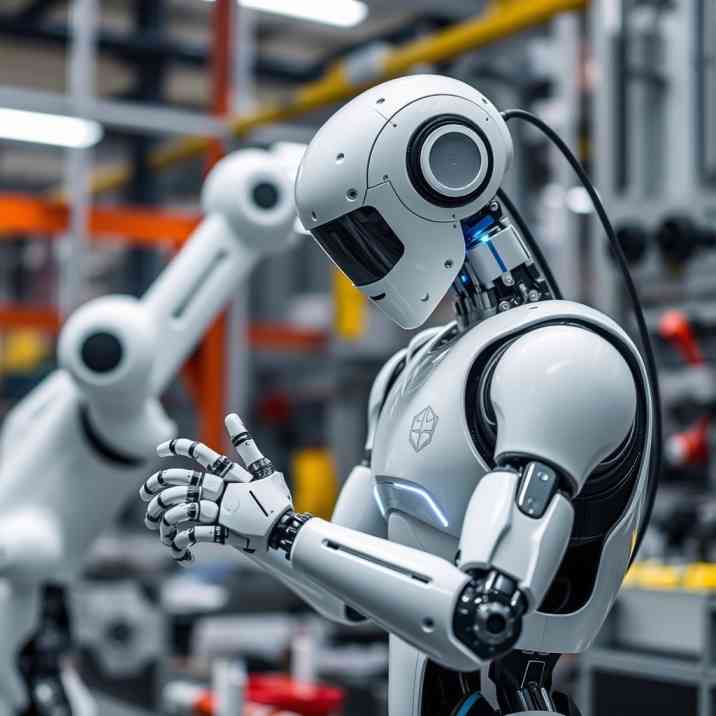
Are you curious about how robotics and automation services are reshaping industries? These cutting-edge technologies are revolutionizing workflows, boosting efficiency, and driving innovation. Let’s explore their impact and benefits in detail.
What Are Robotics and Automation Services?
Robotics and automation services involve using machines and software to perform tasks with minimal human intervention. These systems streamline operations in manufacturing, logistics, healthcare, and more. For instance, robots now assemble products faster than ever before.
According to Statista , the global robotics market is projected to reach $200 billion by 2025. This growth highlights their increasing importance across sectors.
Why Are These Services Essential?
Firstly, they reduce human error significantly. Additionally, they enhance productivity by working around the clock. Businesses also save costs in the long run by automating repetitive tasks.
Moreover, these services improve safety. Dangerous jobs like welding or heavy lifting are now handled by robots, protecting workers from harm.
Key Applications of Robotics and Automation
Manufacturing
In manufacturing, robots assemble products, package goods, and inspect quality. They ensure precision and consistency, which are crucial for high-quality outputs.
Healthcare
Automation powers robotic surgeries, patient monitoring, and drug dispensing. Tools like the Da Vinci Surgical System showcase advancements in this field, as noted by Mayo Clinic .
Logistics
Warehouses use robots to sort, pack, and transport items. Amazon’s fulfillment centers, for example, rely heavily on automated systems for efficiency.
Agriculture
Robots assist in planting, harvesting, and monitoring crops. This boosts yields while reducing labor costs for farmers.
Advantages of Implementing Robotics and Automation
Increased Efficiency
Tasks are completed faster and with higher accuracy. Consequently, businesses meet deadlines more effectively.
Cost Savings
While initial investments may seem high, long-term savings outweigh the costs. Maintenance expenses are relatively low compared to manual labor.
Scalability
Automation systems adapt to varying workloads easily. This flexibility makes them ideal for growing businesses.
Challenges to Consider
Despite their benefits, robotics and automation come with challenges. Firstly, implementation costs can be prohibitive for small businesses. Additionally, some employees fear job displacement due to automation.
However, upskilling workers can mitigate these concerns. Training programs help staff transition into roles managing or maintaining these systems.
How to Get Started with Robotics and Automation
If you’re considering adopting these services, here’s what to do:
- Assess your business needs and identify areas for automation.
- Research vendors offering tailored solutions, such as ABB Robotics .
- Start small with pilot projects to test feasibility.
- Train your team to maximize the benefits of new systems.
By taking these steps, you’ll ensure a smooth transition to automated processes.
Frequently Asked Questions About Robotics and Automation
- What industries benefit most?
Manufacturing, healthcare, logistics, and agriculture see significant advantages. - Is automation expensive?
Initial costs are high, but long-term ROI justifies the investment. - Can small businesses afford it?
Yes, many vendors offer scalable solutions for smaller budgets. - Will robots replace human jobs?
Some roles may change, but new opportunities will emerge in tech management. - Which tools are commonly used?
Popular tools include PLCs, SCADA systems, and collaborative robots. - How do I choose the right system?
Evaluate your goals, budget, and vendor expertise before deciding. - What’s the future outlook?
AI integration will further enhance robotics capabilities in the coming years. - Where can I learn more?
Platforms like Robotics Business Review provide industry insights. - Are these systems secure?
Cybersecurity measures ensure protection against potential threats. - How fast can I implement them?
Timelines vary based on complexity, but planning ensures timely execution.
Final Thoughts
To conclude, robotics and automation services are transforming industries worldwide. By adopting these technologies, businesses can achieve greater efficiency, reduce costs, and stay competitive. With careful planning and execution, the possibilities are limitless.
For further information, Contact us OR Pentheblog .
